Advantech
Enabling an Intelligent Planet
Overview
|
HQ Location
Taiwan
|
Year Founded
1983
|
Company Type
Public
|
Revenue
$1-10b
|
|
Employees
1,001 - 10,000
|
Website
|
Stock Ticker
TPE: 2395
|
Twitter Handle
|
Company Description
Founded in 1983, Advantech is a leader in providing trusted innovative embedded and automation products and solutions. Advantech offers comprehensive system integration, hardware, software, customer-centric design services, and global logistics support; all backed by industry-leading front and back office e-business solutions.
IoT Solutions
Advantech has always been an innovator in the development and manufacture of high-quality, high-performance computing platforms. They cooperate closely with our partners to help provide complete solutions for a wide array of applications across a diverse range of industries. To realize our corporate vision of Enabling an Intelligent Planet, Advantech will continue collaborating and Partnering for Smart City & IoT Solutions.
Subsidiary
IoT Snapshot
Advantech is a provider of Industrial IoT infrastructure as a service (iaas), platform as a service (paas), application infrastructure and middleware, analytics and modeling, functional applications, cybersecurity and privacy, networks and connectivity, processors and edge intelligence, sensors, automation and control, and wearables technologies, and also active in the agriculture, apparel, automotive, buildings, construction and infrastructure, electronics, equipment and machinery, food and beverage, healthcare and hospitals, metals, renewable energy, retail, semiconductors, transportation, and utilities industries.
Technologies
Sensors
Barcode Readers
Camera / Video Systems
Environmental Sensors
Flow Meters
Humidity Sensors
Optical Sensors
RFID Readers
Temperature Sensors
Utility Meters
Vibration Sensors
Voltage Sensors
Networks & Connectivity
Cellular
Gateways
Routers & Bridges
WiFi
Ethernet
RFID
Wireless Local Area Network
Automation & Control
Human Machine Interface (HMI)
Automation & Process Control Systems
Distributed Control Systems
Electric Drives & Control
Programmable Logic Controllers (PLC)
Supervisory Control & Data Acquisition (SCADA)
Analytics & Modeling
Big Data Analytics
Computer Vision Software
Machine Learning
Predictive Analytics
Real Time Analytics
Platform as a Service (PaaS)
Connectivity Platforms
Device Management Platforms
Edge Computing Platforms
Application Development Platforms
Functional Applications
Computerized Maintenance Management Systems (CMMS)
Manufacturing Execution Systems (MES)
Remote Monitoring & Control Systems
Application Infrastructure & Middleware
API Integration & Management
Data Visualization
Database Management & Storage
Use Cases
Building Automation & Control
Building Energy Management
Computer Vision
Machine Condition Monitoring
Manufacturing System Automation
Mesh Networks
Outdoor Environmental Monitoring
Predictive Maintenance
Process Control & Optimization
Public Warning & Emergency Response
Remote Asset Management
Smart Irrigation
Track & Trace of Assets
Vehicle Telematics
Visual Quality Detection
Warehouse Automation
Functional Areas
Industries
Services
Technology Stack
Advantech’s Technology Stack maps Advantech’s participation in the infrastructure as a service (iaas), platform as a service (paas), application infrastructure and middleware, analytics and modeling, functional applications, cybersecurity and privacy, networks and connectivity, processors and edge intelligence, sensors, automation and control, and wearables IoT Technology stack.
-
Devices Layer
-
Edge Layer
-
Cloud Layer
-
Application Layer
-
Supporting Technologies
Technological Capability:
None
Minor
Moderate
Strong

Supplier missing?
Start adding your own!
Register with your work email and create a new supplier profile for your business.
Case Studies.
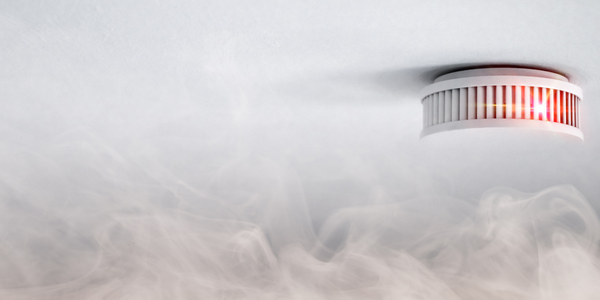
Case Study
Fire Alarm System and Remote Monitoring Sytem
Fire alarm systems are essential in providing an early warning in the event of fire. They help to save lives and protect property whilst also fulfilling the needs of insurance companies and government departments.Fire alarm systems typically consist of several inter-linked components, such as smoke detectors, heat detector, carbon monoxide, manual call points, sounders, alarm and buzzer. The fire alarm system should give immediate information in order to prevent the fire spread and protect live and property.To get maximum protection a shoe manufacturer in Indonesia opted for a new fire alarm system to monitor 13 production sites spread over 160 hectars. Although the company had an existing fire alarm system, it could not be monitored remotely.It was essential that the new system would be able to be monitored from a central control room. It needed to be able to connect to the existing smoke detector and manual call point. Information should be easily collected and passed on to the Supervisory Control and Data Acquisition (SCADA) system. Furthermore, the system should have several features such as alarm management, auto reporting, being connected to many client computers without additional cost, and run 24/7 without fails. The company also needed a system which could be implemented without changing the architecture of the existing fire alarm system.
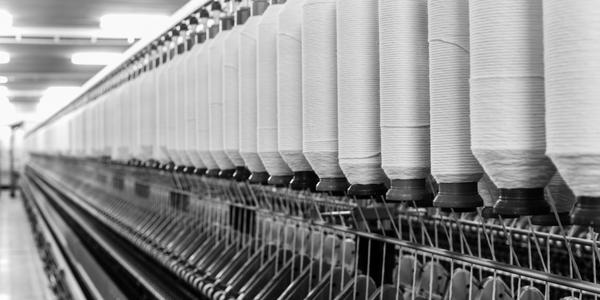
Case Study
IoT Applications and Upgrades in Textile Plant
At any given time, the textile company’s manufacturing facility has up to 2,000 textile carts in use. These carts are pushed from room to room, carrying materials or semi-finished products. Previously, a paper with a hand-written description was attached to each cart. This traditional method of processing made product tracking extremely difficult. Additionally, making sure that every cart of materials or semi-finished products went to its correct processing work station was also a problem. Therefore, the company desired an intelligent solution for tracking assets at their factories. They also wanted a solution that would help them collect process data so they could improve their manufacturing efficiency.

Case Study
Energy Saving & Power Monitoring System
Recently a university in Taiwan was experiencing dramatic power usage increases due to its growing number of campus buildings and students. Aiming to analyze their power consumption and increase their power efficiency across 52 buildings, the university wanted to build a power management system utilizing web-based hardware and software. With these goals in mind, they contacted Advantech to help them develop their system and provide them with the means to save energy in the years to come.
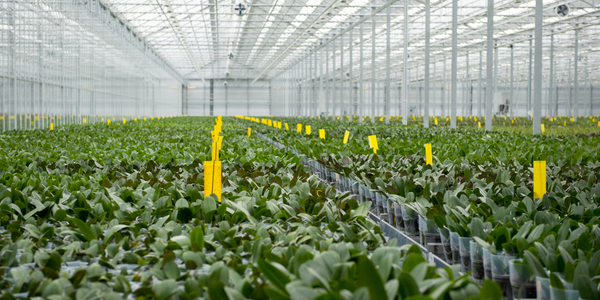
Case Study
Greenhouse Intelligent Monitoring and Control Solution
Farming Orchids is the most successful form of precision farming in Taiwan, and also the most exported flower. Orchids need a specific temperature and humidity conditions to grow and bloom, and its flowering time may not be in line with market demands, so the price collapses when there is overproduction. Therefore, some farmers began to import automated greenhouse control systems for breeding and forcing, which not only improves quality, but also effectively controls the production period and yield to ensure revenue. In 2012, an orchid farmer built a Forcing Greenhouse of about 200 pings (approximately 661 Square Meters) in Tainan, Taiwan. The system integrator adopted Advantech’s APAX-5000 series programmable automation controllers to build the control platform, coupled with Advantech WebAccess HMI/SCADA software, to achieve cloud monitoring. The staff of the orchid field can monitor important data anytime via smart phone, iPad, and other handheld devices, and control the growth and flowering conditions. System requirements: In the past, most environmental control systems of orchid greenhouses in Taiwan used PLCs (Programmable Logic Controller) with poorscalability and control, and could not be connected to the Internet formonitoring from the cloud. For advanced database analysis and networking capability, the PC platform must be adopted. Therefore, PAC Systems (Programmable Automation Controller) with both PLC programming capabilities andPC functions is a better choice.The environmental control of the Orchid greenhouse switches on and off devices like fan, shade net, cooling/heat pump, liquid flow control, water-cooling wall etc. It is controlled by a control panel of electric controllers, and is driven by a motor, to adjust the greenhouse temperature, humidity, and other environmental conditions to the set parameters.

Case Study
Intelligent Building Automation System and Energy Saving Solution
One of the most difficult problems facing the world is conserving energy in buildings. However, it is not easy to have a cost-effective solution to reduce energy usage in a building. One solution for saving energy is to implement an intelligent building automation system (BAS) which can be controlled according to its schedule. In Indonesia a large university with a five floor building and 22 classrooms wanted to save the amount of energy being used.
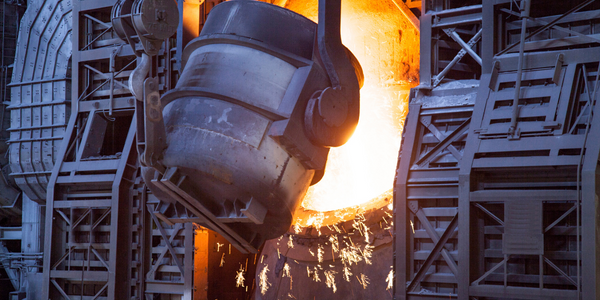
Case Study
Continuous Casting Machines in a Steel Factory
With a very broad range of applications, steel is an important material and has been developed into the most extensive alloy in the engineering world. Since delivering high quality is absolutely crucial for steel plants, ensuring maximum productivity and the best quality production are the keys to competitiveness in the steel industry. Additionally, working conditions in steel factories are not suitable for workers to stay in for long periods of time, so manufactures usually adopt various machines to complete the steel production processes. However, the precision of these machines is often overestimated and the lack of flexibility also makes supervisors unable to adjust operating procedures. A renowned steel factory in Asia planned to improve its Distributed Control System (DCS) of furnaces as well as addressing the problem of insufficient accuracy. However, most well-known international equipment suppliers can not provide a satisfactory solution and local maintenance because the project needed new technologies to more accurately control equipment operations. By implementing Advantech’s automated monitoring and control solution, steel factories can not only improve the manufacturing processes but can also allow users to add additional functions to the existing system so as to make sure the operation runs at high efficiency.
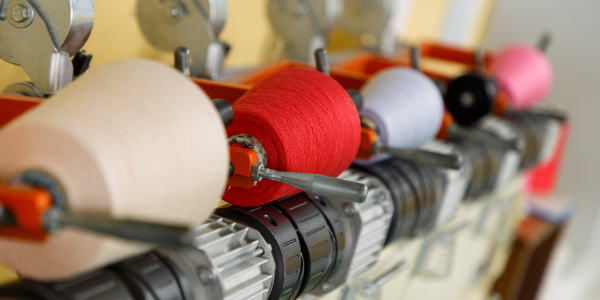
Case Study
Monitoring and Controlling Automatic Mixing and Dispensing Machines
As technology advances, textile manufacturing has been transformed from a labor-intensive to a partially or fully automated industry. Automation is significant in all segments of textile production - from spinning to printing, and textile machinery manufacturers are constantly searching for new technologies and automation processes will increase the productivity of their machines. The color paste mixing and dispensing machine is an essential part of the printing and dyeing process. With the advantage of automatically computerized controls and database management, the system can significantly improve its dispensing precision, working efficiency and production quality as well as reducing material consumption.

Case Study
Bus Manufacturers to Realize a Smart Factory
China's Yutong Bus Group is a large-scale manufacturing company. Its enterprise scale and sales performance continuously ranks first in the nation’s bus industry, and its bus products are exported to more than a hundred countries and regions. In order to improve the manufacturing process and carry out the transparent production control, the company planned to upgrade the existing manufacturing floor into the advanced and efficient factory. In addition to using MES as the production management system, it was also necessary to adopt panel PCs as the HMI and to establish a network communication in the manufacturing site. On account of stability, the IT department of this company excluded commercial computers and decided to choose the industrial product which has the advantages of high-performance and low failure rates. The factory is a complex and harsh environment, so this project required providing different kinds of panel computers with rugged features for different machine uses, offering wired and wireless network devices to create a complete communication link, and the related modules to acquire peripheral data. Therefore, to ensure this stability, the system integrator used industrial grade wireless devices with wider network coverage and higher power output.
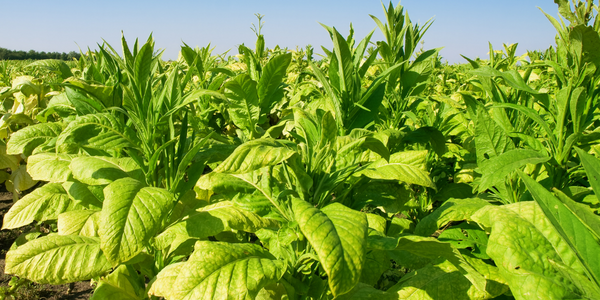
Case Study
Controlling and Monitoring Tobacco Plants in China
Without the aid of computers, calculating production volume in a tobacco plant is troublesome and error-prone. PC-based monitoring systems that automatically collect production data and keep records can greatly improve in-factory logistics management and machinery maintenance. Combined with the use of networking communications, a Manufacture Executive System (MES) can be developed to improve the overall management of the factory. Our customer is a branded tobacco producer in China. When they came to Advantech, their production lines were already automated with the deployment of Programmable Logic Controllers (PLCs). However, they were still dependent on manual labor to count the amount of cigarettes and other materials, and their engineers had to manually check and record the data-logs stored in the PLCs to produce analyses for repair and maintenance purposes. But with Advantech’s PC-based monitoring machines, installed next to manufacturing machines, related data is shown on touch screens and transmitted to the control center, helping to reduce errors and improve management efficiency.
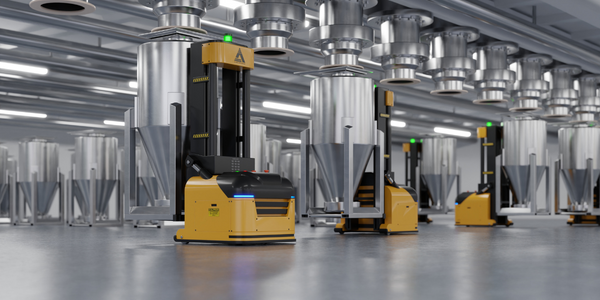
Case Study
PC-based PAC solution for material handling AGV optimization
Widely used across many industries, Automated Guided Vehicles (AGV) have been scooting around factory floors for decades. Thanks to evolving technologies like sensors, wireless networks and automatic control technologies, their guidance methods and physical dimensions continue to evolve and now small lightweight trackless AGV are being rolled out. An American AGV System Integrator (SI) was designing a Laser Guided Vehicle (LGV) for a material handling system in an automotive assembly plant. Since the plant’s existing AGV system used an expensive PLC-based control system there weren’t enough functions to meet the new control requirements, the company decided to upgrade and shift to a compact PC-based PAC control system ideal for the new compact vehicle design, capable of integrating with upper management systems using a single software application to replace the original two software applications.
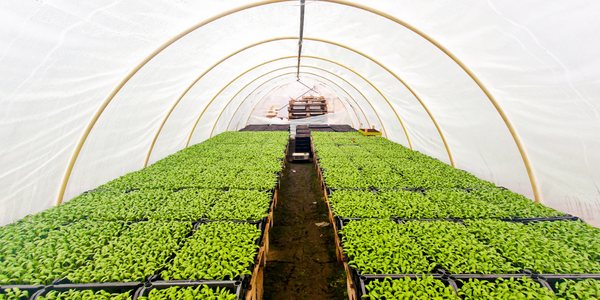
Case Study
Remote Monitoring and Controlling of Greenhouses
For people who live and work in big cities, growing their own fruits and vegetables is a dream which is often difficult to realize. But how about renting a greenhouse, and being able to remotely plant seeds, spray water and apply fertilizers through a webpage, and then watching how your crops are growing via streaming video from an IP camera while you occasionally pay a physical visit to your plants at the weekends or holidays to harvest and cook your vegetables at a feast? A group of young Taiwanese entrepreneurs are making their own, and other people’s dreams come true by establishing greenhouse plots for rent. Leveraging the latest Advantech technologies and features provided by the ADAM-6200 series Ethernet I/O series and WebAccess 8.0 HMI/SCADA software, they’ve created a greenhouse automation and remote monitoring solution from which their customers can control and monitor the environment via a virtual dashboard on a computer, smartphone or other web-based device in real time.

Case Study
Real-time Monitoring and Unified Management Platform for PV Plant
As PV power plants continue to increase, centralized management and information integration become thorny problems.Enterprise PV systems mainly supply power for their own needs and may sell excess power to the power company whereas Photovoltaic (PV) power plants specialize in solar energy collection and then feeding the energy into the grid.To transmit the data of the PV systems wired or wireless networks can be used. However, wireless networks have the advantage of flexibility and are the best choice for those who want quick deployment.Taking into account the requirements of wider coverage and long-distance transmission, the existing fiber-optic networks had many shortcomings ie high cost, complicated wiring and long construction period, and it may also have been necessary to excavate walls, drill holes, embed wires, or even destroy the original building structure. After evaluation, the Juli Group decided to adopt an easy installation and easy expansion wireless network system for early completion of this project.

Case Study
Energy Conservation and Efficiency in a Shanghai Office Building
Conservation of energy resources through energy management solutions are receiving considerable attention in the modern office building sector. Specific questions were directed towards average monthly energy costs and energy consumption. Meanwhile administrators need to have sufficient information about the state of their facilities’ to plan energy conservation. For those reasons, new office buildings are usually embedded with advanced technology energy efficiency features to monitor their electricity and water resources to detect leaks in the building’s plumbing and facilities usage to reduce energy costs as well as providing a comfortable office environment.

Case Study
Advantech’s Flight Information Display Systems Take Off at Airport in China
Improve infrastructure efficiencyProvide a solid foundation for remote management technology used in Advantech’s Flight Information Display System (FIDS), rapid provisioning and optimal use of all computing resources.Reduce operational costsEnable customers to reduce time and manpower costs in discovering, healing, and protecting their networked computing assets.

Case Study
ThinManager Ready Solutions for Factory Management
A medical product company needed to install 230 thin client PCs across four manufacturing plants. Thin clients have been used in offices for many years, but their introduction onto the factory floor has been slow. A thin client network consists of a management computer in a secure, air-conditioned room with back up UPS, whilst on the factory floor there are a number of simple computers which are used to connect to the management computer, thereby removing the need to install individual operating systems and applications on each of the clients whilst also ensuing that there is only one point of failure.The company was looking for a network architecture that would have the lowest maintenance costs and the quickest deployment time. To meet all these needs, each of these sites would have approximately 50 thin clients installed on the factory floor and these would then be connected to a central server located elsewhere on the site. This leaves only one point of maintenance for software updates, security patches and rules for what applications are allowed to run on the thin clients.

Case Study
Human–Robot Control
Industry 4.0 is changing the way manufacturing industry operates. Increasingly more manufacturers are leveraging advanced technologies such as robotics and automation systems to improve productivity and efficiency. As a result, human–machine interfaces (HMIs) are becoming more important in their role in the digital connectedness of humans and machines. However, using the wrong HMI can lengthen development times and increase implementation costs.
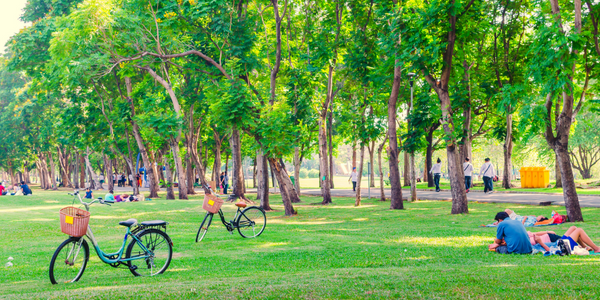
Case Study
Improving Building Comfort and Energy Savings
During the energy crisis of the 1970’s there was a sea-change in the building industry when it paid more attention to the idea of conserving energy and introduced the terms Building Management System (BMS) and Building Automation System (BAS). Continuing rising energy prices and carbonreduction issues have also further spurred the development and deployment of BMS in recent years. However, the early systems were bulky, not user friendly, unreliable, and very expensive. With the advent of computerization, BMS analog signals became digitized so as to be communicated over long distance as well as facilitating the building management process these issues became less.Due to the multiple many management functions and wide range of expertise, modern BMS is quite complex. Successful building management not only needs to link to a multitude of devices but also take account of the suitability of the software for the intended application. Equipped with a web browser-based software package for human-machine interfaces (HMI) and supervisory control and data acquisition (SCADA) which provides automated, centralized and unattended management with a high degree of electronic accuracy, the BMS can fully control the building’s mechanical and electrical equipments and thus effectively monitor energy consumption so that it provides a comfortable, safe and secure environment.Property management is facing various and complex challenges and reducing operating costs have become increasingly important for building owners. As a result, a growing number of new and refitted buildings are being designed to use less energy and focus on the building’s performance. A System Integrator was helping a builder implement advanced BMS for its newest construction project in a creative park in Asia. The construction, a 14-storey building with four underground floors, covers an area of nearly one hundred thousand square meters and contains three distinct sectors - shopping mall, hotel guest room floors and office floors. In order to provide optimal energy management, this BMS needed to be capable of monitoring and controlling a variety of facilities, including air conditioning, power system, plumbing system, fire system, ventilation, elevator, lighting, garden watering and so on. Meanwhile, using one system with an adequate number of nodes in a main control room to manage three different places was a key requirement but each place had to have their own dedicated system and can be controlled independently without mutual interference so as to saving the implementation costs. Due to the need to monitor many areas, there would be tens of thousands of detection points, and the new system also needed to offer remote control capabilities so that building managers or patrol staff can view the status of various facilities in real-time and deal with issues using handheld or mobile devices.

Case Study
Smart Factory Solutions for Tobacco Industries: Bridging the Manufacturing Generation Gap and Improving Operational Efficiency
The tobacco industry, represented in this case by British American Tobacco (BAT), is facing a decline in cigarette volumes worldwide. This decline has led to an increased emphasis on efficient supply chains and optimized production processes. The industry is also grappling with the need for agile production facilities and the integration of Industry 4.0 to accommodate diverse production requirements. BAT, in particular, was seeking a factory solution to automate their product control processes, from the transportation of tobacco and cigarette paper to the placement on cigarette machines and the packing conveyor. The company also needed to support the continuous use of legacy equipment, such as relay-controlled cigarette machines dating back to the 90s and AMK servo drive systems, to sustain production levels at speeds of 8000 to 16000 pieces per minute. Furthermore, changing regulatory guidelines necessitated flexibility in labeling requirements.
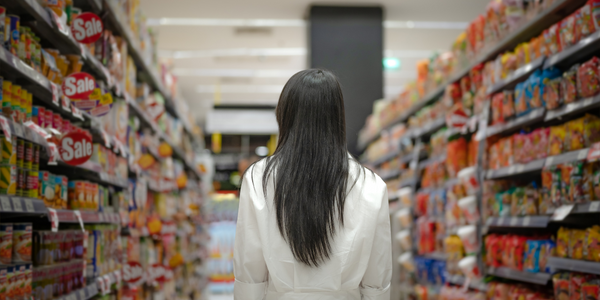
Case Study
Convenience Store Energy Saving Application
Since electricity costs keep on rising, the bills for convenience stores keep on increasing and unfortunately it’s difficult for convenience stores to raise their prices to maintain the same profit margins. Variable overheads are difficult to budget for and give accountants a headache, therefore one convenience store chain in Thailand has decided to redress the balance and put themselves in chargeof power generation by installing solar panels in their stores.Our customer wanted to reduce their energy costs by at least 10 percent and having installed solar panels in their store locations they needed to be able to send the power to where it was needed and when it was needed. Since the stores are open for 24 hours and it’s onlysunny forroughly 12 of those, it was essential that the power distribution to the lighting and refrigeration units was managed efficiently.

Case Study
Automatic Vision Inspection Solution for Product Traceability
With greater market demand for food safety, traceability is receiving increasingly more attention in the food and beverage industry as well as the packaging industry. One of the world's leading providers of beverage containers required a system to identify bar codes and alphanumeric characters on ink-jet-printed labels at a run rate of 7 units and minimum 99.9% accuracy. Since there were few engineers in the factory, the customer sought to implement a reliable system with an easy-to-use GUI for workers with a less technical background.
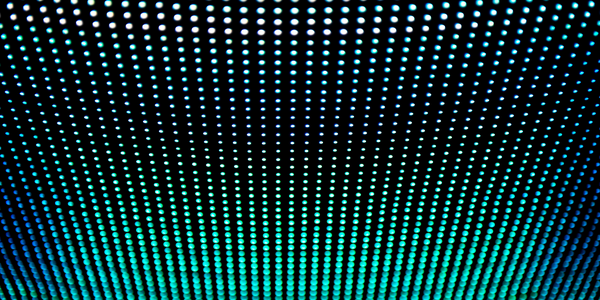
Case Study
A FOG Vision Control Solution for an LED Module Production Line
This manufacturer of LED module bonding machines was in the process of developing large vision machines that comprised 17 industrial PCs (IPCs) in a single machine.They had been testing several IPC brands to identify the ideal one that would improve the stability of their machines. Given the number of IPCs in each machine,having compact IPCs was a major priority for their project.
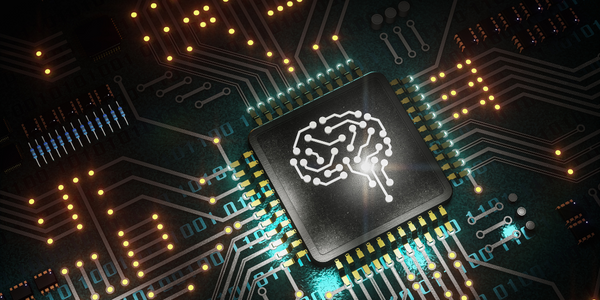
Case Study
Modular AI Defect Inspection Solution for Efficient Semiconductor Equipment Upgrades
Smasoft Technology Co., Ltd., a System Integrator that develops industrial automation software and offers AI application solutions, was commissioned by a semiconductor equipment manufacturer to implement AI inspection features into their Extreme Ultraviolet Light (EUV) pod inspection machines. The existing AOI software in the EUV pod inspection machines could only identify defective products but could not trace the cause of the defects. The manufacturer wanted to upgrade their machines with AI features to make the products more useful. The AI solution needed to complete the analysis of 380 images for a single pod within two minutes and inspect different materials simultaneously. This required multiple sets of AI models for interpretation. The solution also needed to be installed in a cabinet in the lower half of the machines, which posed a challenge due to the limited space. Smasoft needed to purchase a hardware solution with strong computing performance, stable operation, compact size, and flexible configuration to overcome these challenges.
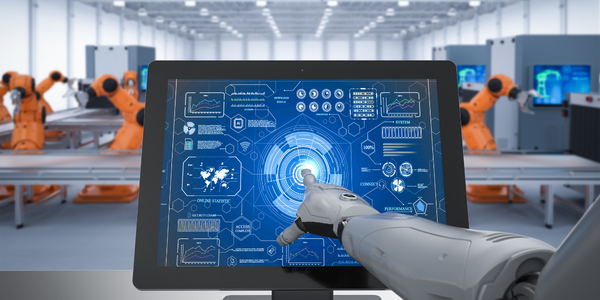
Case Study
HMI Total Solution Enables Bus Manufacturers to Realize a Smart Factory
Industry 4.0 is gradually becoming a reality, and manufacturers are actively transforming their production process into intelligent manufacturing systems by leveraging Information Technology (IT) and Operations Technology (OT).The main concept of Industry 4.0 is to realize transparent vertical and horizontal integration from the production line to management level so as to increase productivity and efficiency. In other words, the resources available throughout the entire production process must be digitalized and networked so that they can be visible and completely availability.
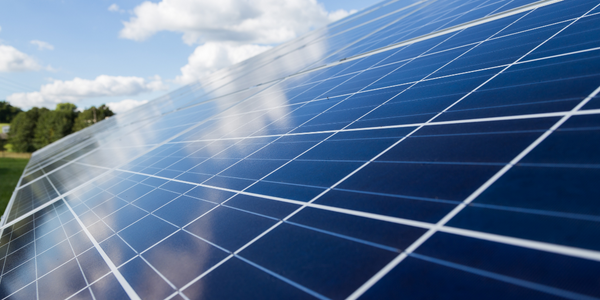
Case Study
Smart Monitoring Solutions for Solar Panels: A Case Study
In 2018, the Japanese government approved the Fifth Energy Basic Plan, prioritizing renewable energy and setting it on a course to become the primary power source in Japan. This led to the re-introduction of solar panels as a renewable energy source. However, renewable energy sources such as solar power have weaker 'bearing capacity' than other power generation methods due to their characteristics. Solar power can be challenging to control because the output fluctuates based on weather conditions. If a large amount of electricity is supplied from the photovoltaic power generation sources to the grid when the power demand is low, the voltage and frequency can be disturbed, and the entire grid can become unstable. In some cases, it can lead to a large-scale power outage. This risk necessitated developments to solve problems like monitoring and controlling the amount of electricity produced by solar panels. NWC partnered with a client that generates and sells electricity serving residential, commercial, and industrial customers. The client needed to monitor the amount of electricity produced by 88,000 solar panels with a power generation capacity of 28 MW/h in a field size of 700 x 700 meters. The initial idea was a 13 kilometer wired optical network; however, the cost of over 1 billion yen made this approach expensive and impractical.

Case Study
Edge Solutions for Smart Monitoring of HVAC Manufacturing: A Case Study on Daikin India
Daikin India, a leading HVAC solutions provider, was seeking to optimize energy efficiency and productivity at its factories. The company wanted to implement an equipment monitoring and data collection solution for its HVAC subassembly lines. However, the challenge was that these lines featured numerous programmable logic controllers (PLCs), which limited the available installation space and network capabilities. Therefore, Daikin India needed a compact yet versatile solution for acquiring and visualizing production data without high networking/infrastructure costs. The company also required a system that supports smart real-time monitoring of HVAC subassembly lines, enables seamless acquisition and visualization of equipment data, minimizes and streamlines data transmissions, offers configurable PLC I/O data collection flexibility, and provides reliable industrial-grade hardware.
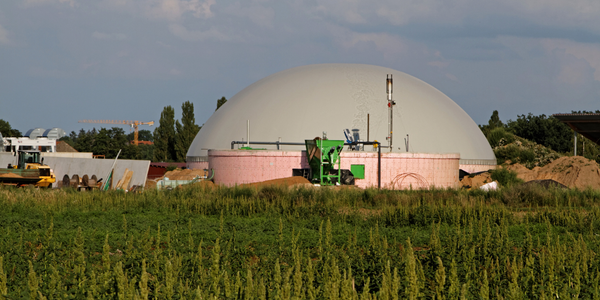
Case Study
Smart Monitoring System for Taiwan's First Micro-Biomass Power Plant
SunForce Technology Co., Ltd was tasked with developing a monitoring system for micro biomass power plants in Taiwan. The goal was to reduce labor expenses and equipment failure rates while increasing power generation. The challenge was to create a system that could perform scheduling and cascade control to create standard operating procedures. The aim was to achieve remote monitoring and real-time management of the power plants. The system was also expected to adapt to third-party software and interface with environmental protection authorities, as well as export biomass electricity for sale to Taipower. The future plan was to combine artificial intelligence with gradually accumulated operational data to perform intelligent monitoring.
Similar Suppliers.

Supplier
Cisco
Cisco designs and sells broad lines of products, provides services, and delivers integrated solutions to develop and connect networks around the world, building the Internet. Over the last 30 plus years, they have been the world’s leader in connecting people, things, and technologies - to each other and to the Internet - realizing their vision of changing the way the world works, lives, plays, and learns.Today, Cisco has over 70,000 employees in over 400 offices worldwide who design, produce, sell, and deliver integrated products, services, and solutions. Over time, they have expanded to new markets that are a natural extension of their core networking business, as the network has become the platform for automating, orchestrating, integrating, and delivering an ever-increasing array of information technology (IT)–based products and services.Subsidiaries/ Business Units: - Jasper - OpenDNS - CloudLock

Supplier
Siemens
Siemens is the largest engineering company in Europe. With their positioning along the electrification value chain, Siemens has the knowhow that extends from power generation to power transmission, power distribution and smart grid to the efficient application of electrical energy. Featured Subsidiaries/ Business Units: - Digital Factory - Siemens Technology to Business (TTB)

Supplier
Schneider Electric
Schneider Electric is a leading global manufacturer of equipment for electrical power distribution and for industrial control and automation. The company helps power generators distribute electricity; designs automation systems for the automobile and water treatment industries; builds electric networks and utility management systems for energy, water treatment, oil and gas, and marine applications; and manages electric power in residential, industrial, and commercial buildings.Year founded: 1836Revenue: $26.0 billion (2014)EPA: SUFeatured Subsidiaries/ Business Units:- Avantis- Wonderware
_1.jpg)
Supplier
Bosch
Bosch is an industry leader in automobile and industrial equipment, as well as consumer goods and building systems. Bosch operates via 440 subsidiaries in 60 countries; its core lines include mobility (auto) systems, from diesel/hybrid drive to steering, starter motors and generators, electronics, and brakes.Year founded: 1886Revenue: $58.7 billion (2014)Portfolio Companies:- Bosch Software Innovations- Rexroth- Deepfield Robotics- Escrypt- ProSyst




